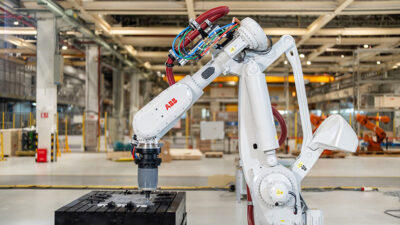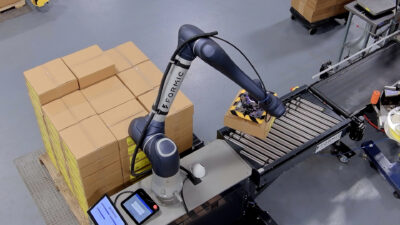The agricultural industry is turning to robots to meet the soaring demand for consumers and replace traditionally manual jobs to improve production.

Farmers in today’s agricultural market need to remain globally competitive while achieving strict quality and traceability standards. Global legislation concerning environmental sustainability and eco-friendly farming practices further pressure those in the agricultural industry at a time when maximizing yields is of the utmost importance.
As farmers face a growing list of challenges to remain competitive and profitable, agricultural robots are playing a vital role in introducing ongoing process optimization, productivity, and larger yields.
According to a report from Markets and Markets, the agricultural robots market is estimated to be worth $12 billion by 2022. Another report from Grand View Research estimates this growth will be at an impressive 20.71% compound annual growth rate (CAGR).
In addition to the industry factors mentioned above, the agricultural industry faces a growing labor shortage and professional service robots are quickly filling in the gap. As the human population grows exponentially, the demand for more food also grows exponentially. All of these factors are driving rapid adoption of automation technology in agriculture.
Agricultural robot applications
Agricultural robots are being deployed in many different ways. Most recently, autonomous mobile robots (AMRs) leveraging advanced 3-D vision systems and flexible grippers are being used to automate picking fruit. Nursery automation has also been a growing trend in agricultural robots as vertical and urban farming initiatives grow in popularity.
Other emerging applications for agricultural robots include:
- Robotic spraying for weed control
- Automated smart harvesting of crops
- Robotic planting and seeding
- Robotic pruning and thinning.
Many of these applications are performed by field robots, a type of mobile and intelligent professional service robot, for complete automation of traditionally manual tasks.
The market for agricultural robots is growing rapidly. For a variety of societal and market-driven factors, farmers are adopting robotic technology to maintain productivity and improve yields. As this adoption continues, agricultural robots will be used in an ever-expanding range of tasks and agriculture will continue to transform into a modern, automated and intelligent process.
This article originally appeared on the Robotics Online Blog. Robotic Industries Association (RIA) is a part of the Association for Advancing Automation (A3), a CFE Media content partner. Edited by Chris Vavra, production editor, Control Engineering, CFE Media, [email protected].



